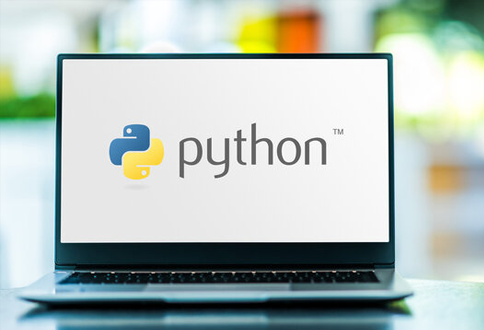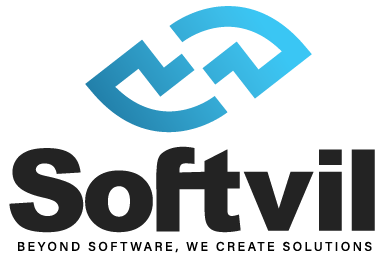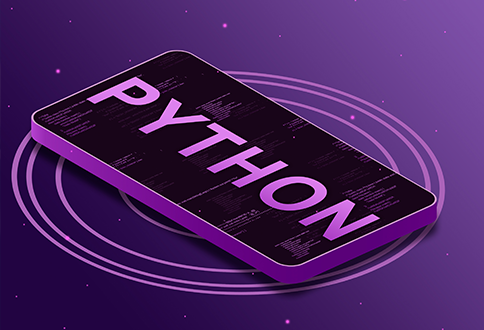Python has emerged as the clear frontrunner in the realm of programming languages, solidifying its position as the leading choice for developers worldwide. With its versatility, simplicity, and extensive ecosystem, Python continues to soar in popularity and dominate various domains of software development and data analysis. In this article, we will delve into the reasons behind Python’s continued reign as the most favored programming language. The extraordinary success of Python can be attributed to its versatility and ease of use. Its straightforward syntax and clean code structure make it highly readable, enabling developers of all levels to grasp the language quickly. This simplicity fosters collaboration and accelerates the development process, making Python an ideal choice for projects of all sizes.
Python’s thriving ecosystem also contributes to its continued dominance. The language boasts an extensive range of libraries, frameworks, and tools that cater to diverse needs. From data manipulation and analysis with libraries like NumPy and Pandas to web development using frameworks like Django and Flask, Python offers comprehensive solutions for various applications. Moreover, Python benefits from a robust and supportive community of developers. The Python community actively contributes to its growth, offering invaluable resources, sharing knowledge through forums and tutorials, and collaborating on open-source projects. This strong community support nurtures innovation and facilitates continuous improvement. As Python continues to be adopted by prominent companies and organizations, its presence in industry further cements its position as the leading programming language. With its versatility, vibrant community, and extensive ecosystem, Python shows no signs of slowing down, poised to shape the future of software development and data analysis.
Versatility and Ease of Use
Python’s versatility and ease of use have positioned it as one of the most popular programming languages. Its broad range of applications, spanning web development, scientific computing, and machine learning, showcases its adaptability to diverse projects. A key factor contributing to Python’s widespread adoption is its clear and readable syntax. Python emphasizes code readability, with its minimalist and expressive style. This simplicity allows developers to write code that is easily understandable and maintainable, reducing the likelihood of errors. As a result, Python is not only favored by seasoned programmers but also attracts beginners who find its syntax approachable and intuitive.
Python’s simplicity lends itself to rapid development. The language’s concise and straightforward nature allows developers to write code quickly, increasing productivity. Additionally, Python offers extensive libraries and frameworks that provide pre-built functionalities, further expediting the development process. This efficiency makes Python an excellent choice for projects with tight deadlines or iterative development cycles. Furthermore, Python’s ease of use fosters collaboration within teams. Its simplicity facilitates communication and comprehension among team members, enabling efficient collaboration and smoother project workflows. This collaborative aspect of Python contributes to its popularity in both small-scale projects and large-scale endeavors.
The Thriving Ecosystem
Python’s thriving ecosystem is a key driver behind its continued success as a leading programming language. The extensive collection of libraries, frameworks, and tools available for Python empowers developers to create efficient and high-quality solutions across various domains. Libraries like NumPy, Pandas, and Matplotlib have revolutionized data manipulation and analysis. NumPy provides powerful numerical computing capabilities, while Pandas simplifies data manipulation and analysis tasks, making them more accessible and efficient. Matplotlib, on the other hand, enables developers to create visually appealing and informative data visualizations. These libraries not only save developers time but also enhance the accuracy and effectiveness of data-driven projects. When it comes to web development, Python offers powerful frameworks like Django and Flask. Django, a full-featured framework, provides a robust and scalable foundation for building complex web applications.
Flask, on the other hand, offers a lightweight and flexible framework suitable for small to medium-sized projects. Both frameworks streamline web development by providing pre-built functionalities, routing systems, and database integration, reducing the time and effort required to build web applications. The availability of these libraries and frameworks accelerates the development process and reduces code complexity. Developers can leverage existing solutions and focus on implementing business logic rather than reinventing the wheel. This not only improves efficiency but also enhances code quality and maintainability. Furthermore, Python’s ecosystem extends beyond libraries and frameworks to encompass a vast range of tools for testing, debugging, packaging, and deployment. These tools streamline the development workflow, automate repetitive tasks, and ensure the reliability and performance of Python applications.
Strong Community Support

The Python community embraces a collaborative and inclusive approach, promoting open discussions and knowledge exchange. Online forums and platforms such as Stack Overflow, Reddit, and dedicated Python communities serve as hubs for developers to seek help, share insights, and exchange ideas. These platforms enable programmers to troubleshoot issues, gain new perspectives, and learn from the experiences of others. In addition to online support, the Python community actively contributes to the creation of valuable resources. Developers publish tutorials, blogs, and documentation to share their expertise and best practices. These resources cater to developers of all levels, from beginners seeking introductory materials to experienced programmers exploring advanced concepts. This abundance of knowledge promotes continuous learning and growth within the Python community.
The Python community also organizes conferences, meetups, and workshops worldwide, bringing developers together to network, collaborate, and expand their skills. These events feature presentations by industry experts, hands-on workshops, and opportunities to connect with like-minded individuals. Such gatherings foster a sense of community, inspire innovation, and provide a platform for sharing advancements in Python and related technologies. Furthermore, the Python community actively contributes to open-source projects, creating a wealth of freely available software and libraries. The collaborative nature of open-source development allows developers to collectively build and enhance tools that benefit the entire community. This shared effort fuels the growth and evolution of Python as a programming language.
Widely Adopted in Industry
Python has firmly established its position as a widely adopted programming language across various industries. Its versatility, ease of use, and extensive ecosystem have propelled its popularity among leading companies and organizations worldwide. Tech giants such as Google, Facebook, and Netflix have embraced Python for a multitude of applications. Python’s simplicity and readability make it an ideal choice for building scalable web applications, managing large-scale data processing, and implementing machine learning algorithms. These companies leverage Python’s powerful libraries and frameworks to create robust and efficient solutions that cater to their massive user bases.
Python’s influence extends beyond the realm of technology companies. Scientific institutions and research organizations utilize Python for data analysis, numerical computations, and simulations. The language’s libraries, such as NumPy and SciPy, provide advanced scientific computing capabilities, making Python a preferred choice for researchers and scientists. Furthermore, Python has found significant adoption in the financial industry. Its ability to handle complex data analysis, develop algorithmic trading strategies, and perform quantitative modeling has made it invaluable for financial institutions. Python’s integration with popular financial platforms and its extensive library support for finance-specific tasks have cemented its position as a go-to language for financial professionals.
The widespread adoption of Python in industry can be attributed to its efficiency, scalability, and community support. Its flexibility allows organizations to tackle a wide range of challenges effectively, whether it’s developing web applications, analyzing large datasets, or implementing artificial intelligence solutions.
In conclusion
Python’s continued dominance as the leading programming language can be attributed to its versatility, ease of use, thriving ecosystem, and strong community support. With its widespread adoption in various domains, Python shows no signs of slowing down. As technology evolves, Python is poised to keep growing, empowering developers to build innovative solutions and contributing to advancements in software development, data analysis, and beyond.

